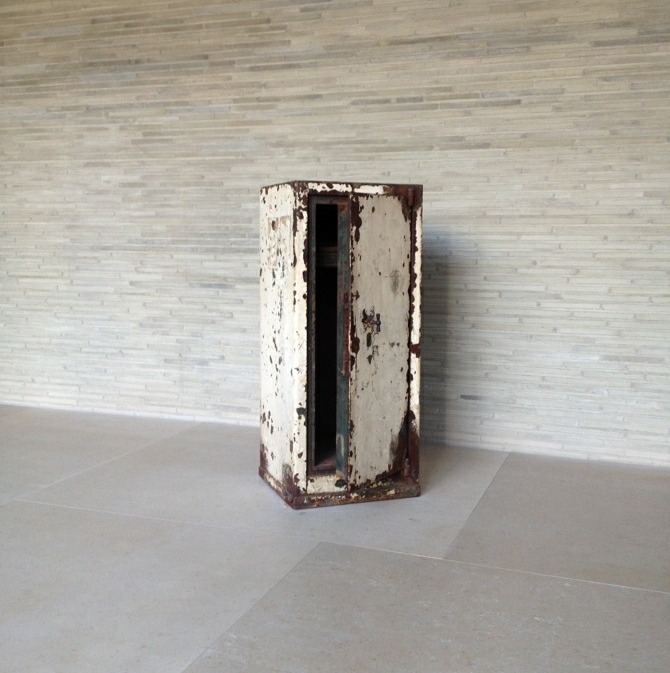
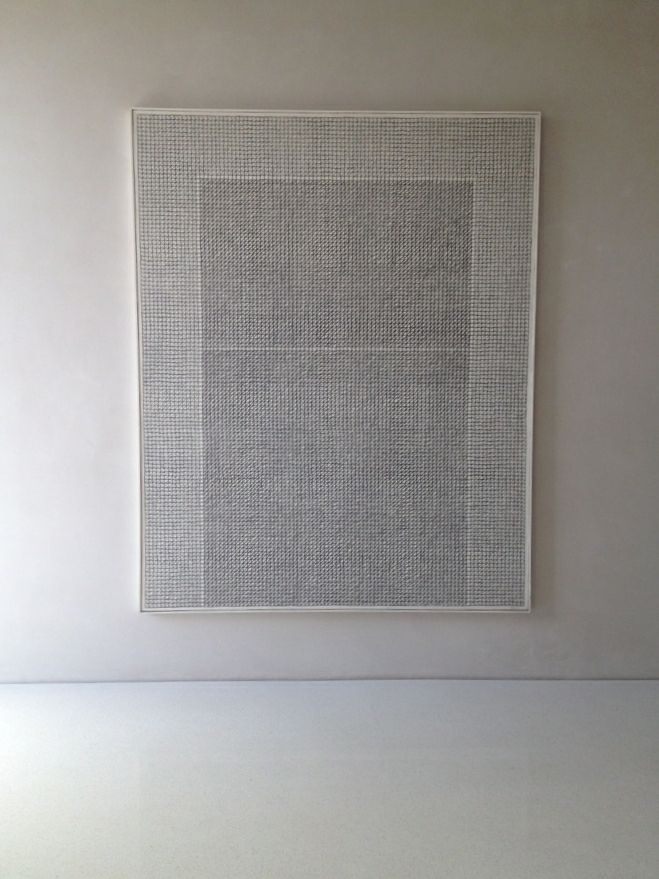
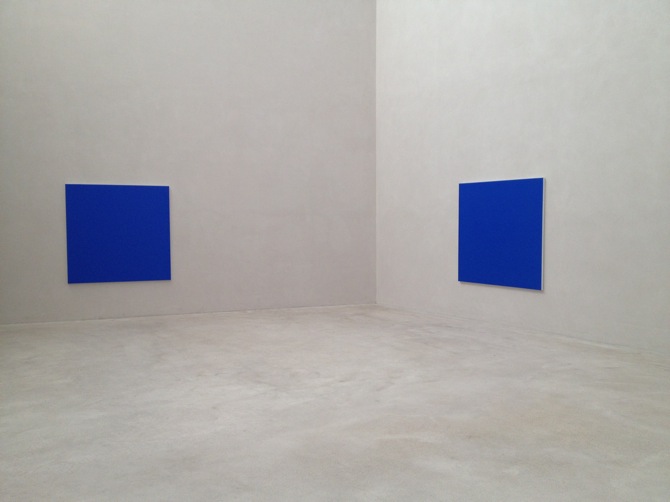
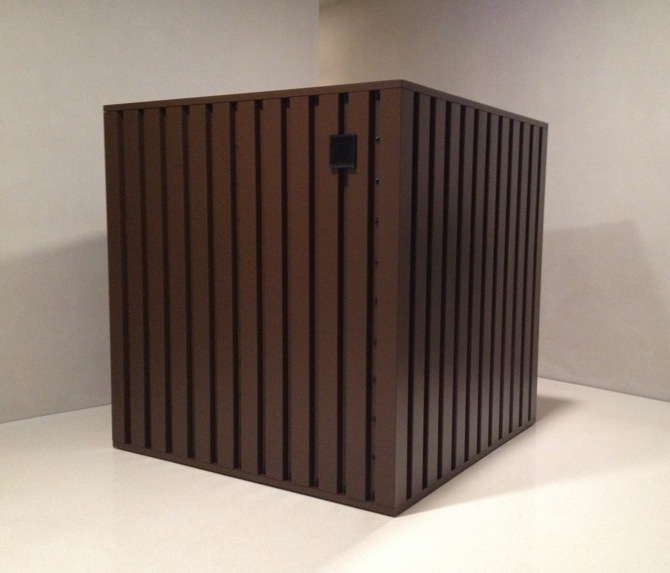
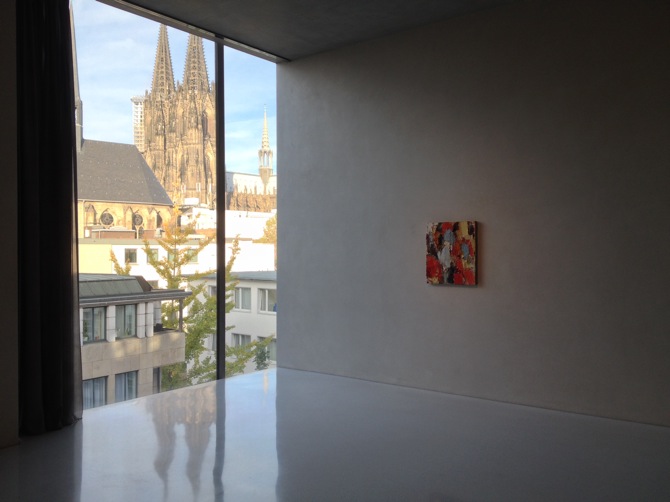
from the top: (1) Thomas Böing "Ohne Titel", 1988 ; (2) Hermann Abrell "Ohne Titel", 1973 ; (3) Rudolf de Cringis "Painting #99.03" and "Painting #99.04", 1999 ; (4) Thomas Rentmeister "Ohne Titel", 1988 ; (5) installation view Michael Toenges "Ohne Titel", 2001 // courtesy Kolumba Köln; photos by artfridge
How the juxtaposition of contemporary art and art from early Christianity can turn into an experience of both dissonance and harmonious contemplation is regularly shown at Kolumba, the museum of the Roman Catholic Archdiocese of Cologne. Originally a parish in the medieval centre of Cologne, St. Kolumba was established as the Cologne Diocese Museum in 1853 and bombed into pieces in World War II. The architect Peter Zumthor renewed the building in 2007 and enclosed the remaining fragments and the Gottfried Böhm-chapel “Madonna in the Ruins” (1949) with perforated walls and a plain and minimalist architecture. Sixteen exhibition rooms, each kept in reduced materiality, vary mostly on the incoming daylight. Their seventh exhibition "show cover hide. Shrine", which is praised to be "an exhibition on the aesthetics of the invisible", is the first show that respects the minimalist architecture by reflecting its subtle and meditative opulence.
In regard to the exhibition the title "show cover hide. Shrine" relates on the one hand to typical covering of holy relics, as it is demonstrated in the display of several precious and rare shrines. On the other hand – and this is a quite interesting perspective – the exhibition poses questions to institutional museum strategies: What is to be exhibited, what is to be kept in the storage? What do we really see and what is hidden inside the display cabinet? Moreover, by showing mostly minimalist paintings, as for instance by the two American abstract painters Max Cole and Frederic Thursz, the museum also highlights the question "What is visible and what is not?".
Rentmeister's work highlights most clearly how this exhibition juxtaposes two completely different and time-delayed interpretations of preciousness: Postmodern abstraction versus medieval Christian relics. This confrontation is particularly played out in a space, where three blue monochromes by Rudolf de Cringis from 1999 and an enormous altar-screen from 1449 are placed vis-à-vis. While the opulent altar-screen offers sacredness and virtuous handcraft, the monochromes simply hypnotise with the concept of three different blue nuances.
What is really striking in this exhibition, is the seemingly natural interplay of the museum's architecture and the contemporary works of art: While Michael Toenges' small and colourful painting is opposed to a large window screen, offering a view to the Dome of Cologne, Raimund Girke's grey monochrome painting is mirrored in the plain stone flooring. A pretty stunning effect – and perhaps a re-interpretation of religious sublimity into the present time.
In regard to the exhibition the title "show cover hide. Shrine" relates on the one hand to typical covering of holy relics, as it is demonstrated in the display of several precious and rare shrines. On the other hand – and this is a quite interesting perspective – the exhibition poses questions to institutional museum strategies: What is to be exhibited, what is to be kept in the storage? What do we really see and what is hidden inside the display cabinet? Moreover, by showing mostly minimalist paintings, as for instance by the two American abstract painters Max Cole and Frederic Thursz, the museum also highlights the question "What is visible and what is not?".
The aspect of revealing and covering is very present in the first two objects of the show: An old strongbox, which was used to lock money away, has been recontextualised by Thomas Böing and now marks the beginning of the exhibition. The locker is slightly opened and allows a peek into the old, rusty (and empty) box. The second piece, a brown large box by Thomas Rentmeister, does not even have a door, but instead suggests a hidden inner life, because of its blowing ventilator. A modern container-shrine that offers no material preciousness, but merely the adventure of secrecy.
Rentmeister's work highlights most clearly how this exhibition juxtaposes two completely different and time-delayed interpretations of preciousness: Postmodern abstraction versus medieval Christian relics. This confrontation is particularly played out in a space, where three blue monochromes by Rudolf de Cringis from 1999 and an enormous altar-screen from 1449 are placed vis-à-vis. While the opulent altar-screen offers sacredness and virtuous handcraft, the monochromes simply hypnotise with the concept of three different blue nuances.
What is really striking in this exhibition, is the seemingly natural interplay of the museum's architecture and the contemporary works of art: While Michael Toenges' small and colourful painting is opposed to a large window screen, offering a view to the Dome of Cologne, Raimund Girke's grey monochrome painting is mirrored in the plain stone flooring. A pretty stunning effect – and perhaps a re-interpretation of religious sublimity into the present time.
An exhibition on the aesthetics of the invisible
15 September 2013 – 25 August 2014
Kolumbastraße 4
50667 Cologne
Opening Hours: Wed - Mon, 12 - 17h / closed on Tuesdays
Admission: € 5 / € 3
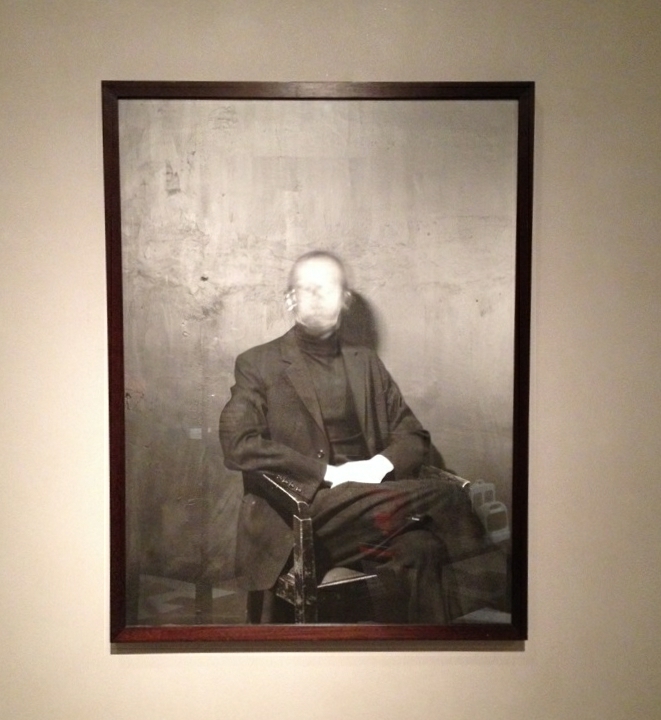
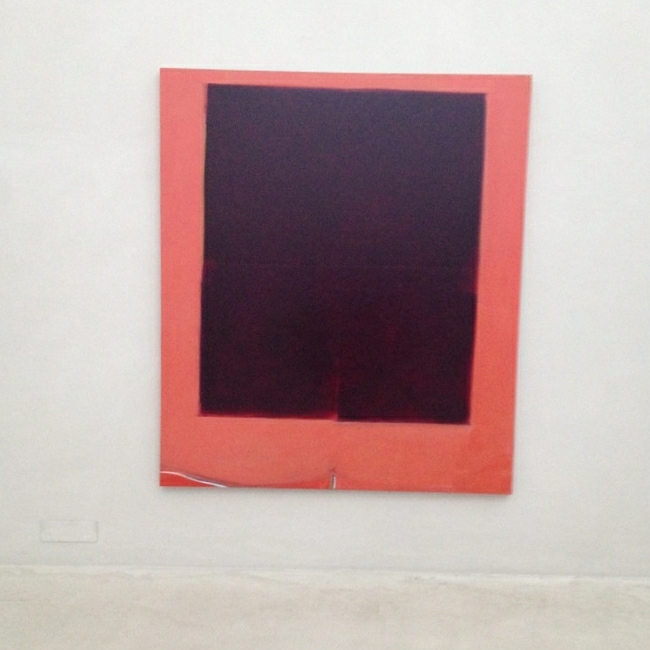
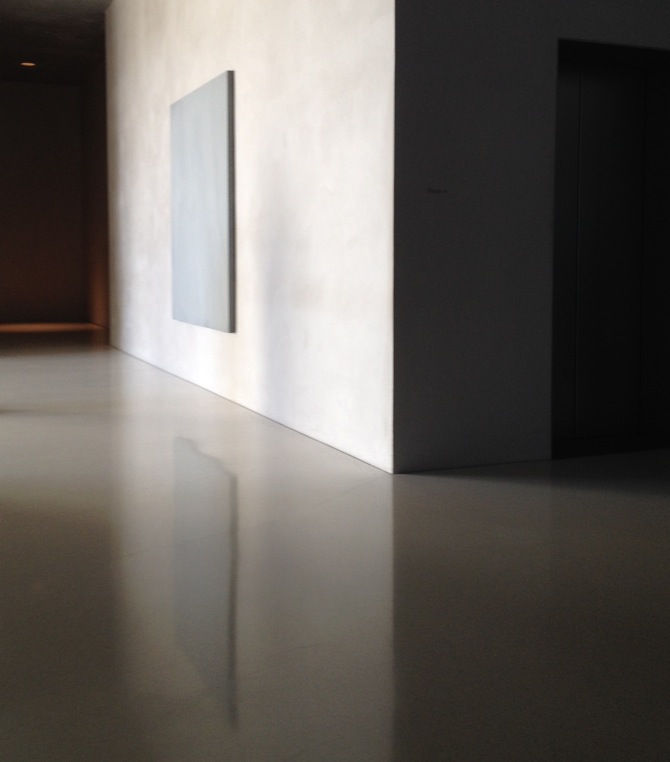
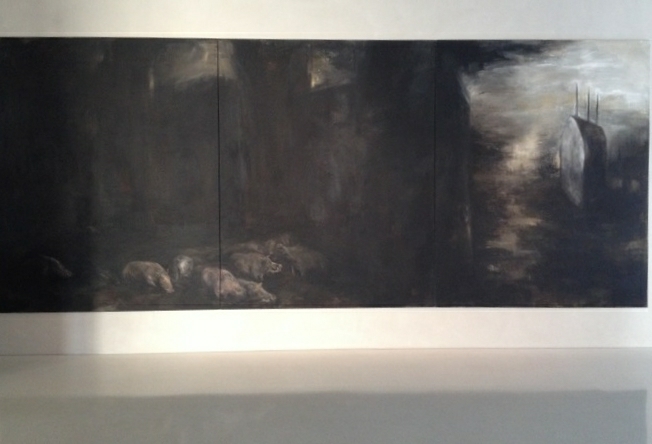

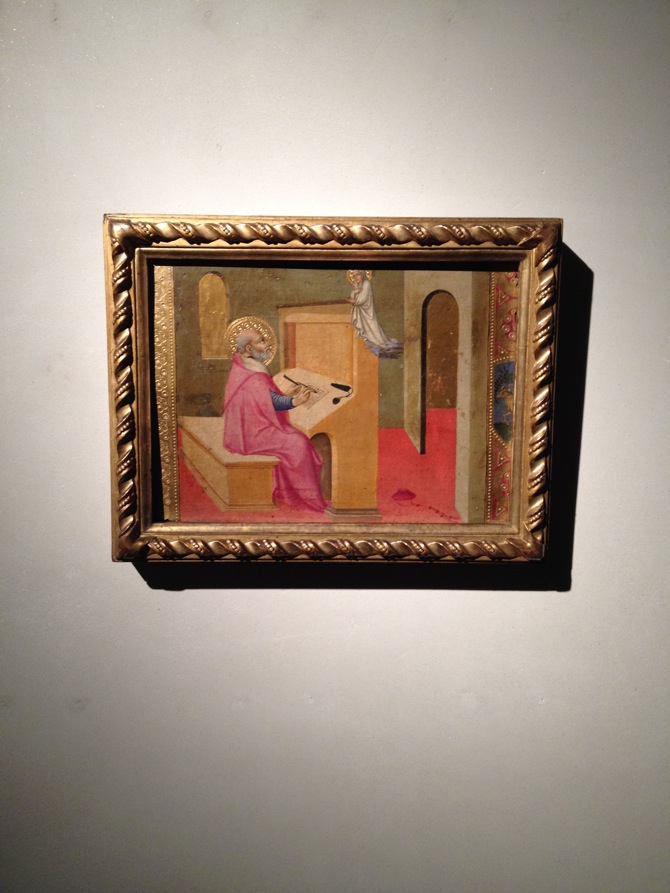
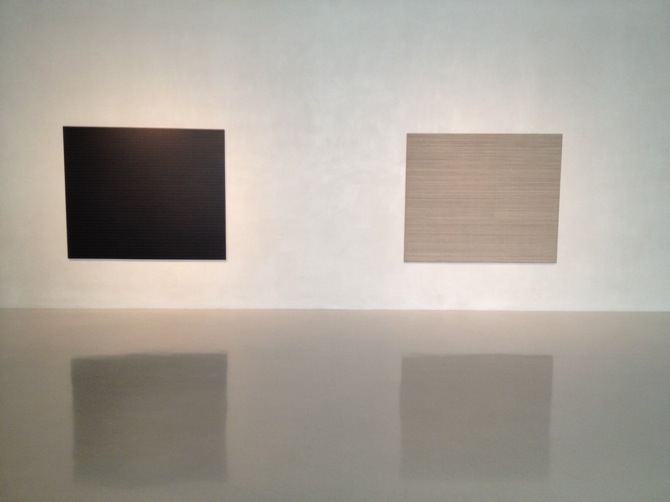
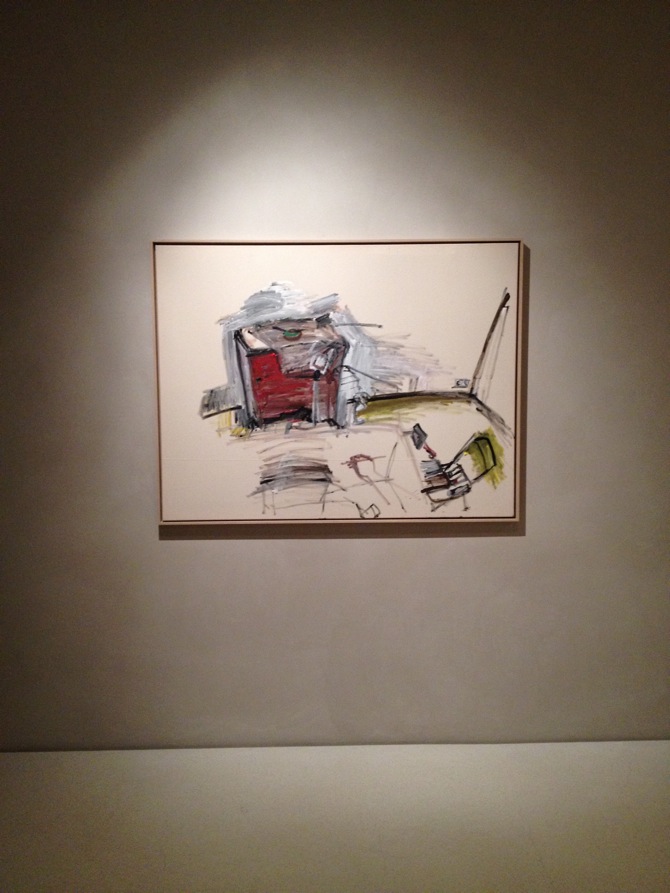
from the top: (1) Gert Bonfert "C65-15", 1986 ; (2) Frederic Thursz "For Mark Rothko", 1972 ; (3) installation view Raimund Girke "Ohne Titel", 1976 ; (4) Christa Näher "Ohne Titel (Schweinebild)", 1984 ; (5) Michael Toenges "Ohne Titel", 2001 ; (6) Sano di Pietro "Dem hl. Hieronymus erscheint die hl. Blesilla", mid 15th century ; (7) Max Cole ; Chris Newman "Little One", 2011 // courtesy Kolumba Köln ; photos by artfridge
